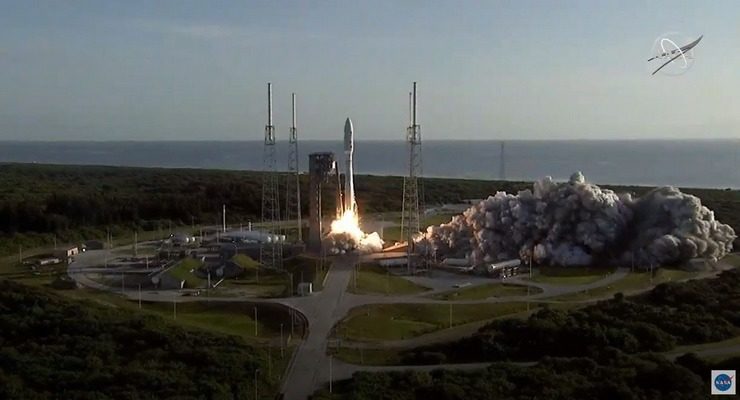
NASA’s Mars 2020 Mission blasted off from Florida Thursday, putting the Jet Propulsion Laboratory’s Perseverance rover on course for the Red Planet to continue humanity’s exploration of our solar system.
Following years of planning, the rover roared into space right on time at 4:50 a.m. PST, propelled by 2 million pounds of thrust provided by an Atlas V rocket.
“It’s a great day. We’re all so excited,” JPL Director of Planetary Science Bobby Braun said. “To be on our way after all the work the team has gone through is really just fantastic.”
After clearing the tower at the Cape Canaveral, the rocket jettisoned the Perseverance rover into space just under an hour later, officially setting it on a course for Mars’ Jezero Crater, where it’s scheduled to touch down Feb. 18, according to NASA.
After traveling about 290 million miles, Perseverance will be lowered onto the Red Planet using an updated version of a complex “SkyCrane” system pioneered by the Mars Curiosity rover, which continues to explore the Red Planet today.
“This type of landing system provides the ability to land a very large, heavy rover on the surface of Mars in a more precise landing area than was possible before Curiosity’s landing,” JPL said in a written statement.
But it’s not easy. When first introduced, engineers described the landing process as “7 Minutes of Terror.”
“Spacecraft separation went well, and so that’s fantastic,” NASA spokesman Derrol Nail said. “We can now say that Perseverance is officially on it’s way to Mars.”
Although he has witnessed many space launches, NASA Associate Administrator for Science Thomas Zurbuchen said watching Mars 2020 blast into the sky was a thrill.
“It’s like punching a hole in the sky. Getting off the cosmic shore of our earth and wading out to the cosmic ocean, I just love it. Every time it gets me,” he said.
The mission is meant to continue the search for ancient life on Mars, as well as further human understanding of the solar system.
In addition to an array of instruments that will gather data and collect samples of rock and dust for return to Earth by future missions, the rover carries an experimental payload called the Ingenuity Mars helicopter.
Engineers are hoping the 4-pound aircraft will soon become the first machine to demonstrate rotorcraft flight on another world, according to JPL. The helicopter is considered a demonstration project intended to prove that powered flight in the thin atmosphere of Mars, which is about 1% as dense as Earth’s, is possible.
Perseverance will also collect samples of Marian rock and dust, which it will store in sealed vials for retrieval by a future mission to bring the first samples of Mars back to Earth, according to JPL.
In another first, the rover carries an experimental device called the Mars Oxygen In-Situ Resource Utilization Experiment, or Moxie. It is built to show that oxygen can be produced from Mars’ primarily carbon dioxide atmosphere, helping pave the way for manned missions in the future.
Perseverance is about 10 feet long, not including its robotic arm, 9 feet wide and 7 feet tall, weighing in at 2,260 pounds.
It’s powered by a nuclear battery, which was installed just days prior to launch, explained Mars 2020 Lead Planetary Protection Engineer Moogega Cooper, who is in charge of preventing cross contamination between Earth and Mars.
After traveling about 290 million miles, Perseverance will be lowered onto the Red Planet using an updated version of a complex “SkyCrane” system pioneered by the Mars Curiosity rover, which continues to explore the Red Planet today.
“This type of landing system provides the ability to land a very large, heavy rover on the surface of Mars in a more precise landing area than was possible before Curiosity’s landing,” JPL said in a written statement.
But it’s not easy. When first introduced, engineers described the landing process as “Seven Minutes of Terror.”
Despite the excitement surrounding Thursday’s launch, the journey has only just begun, NASA spokesman Joshua Santora said.
“The countdown to Mars doesn’t end today,” he said. “The countdown to Mars ends in February.”














 0 comments
0 comments


